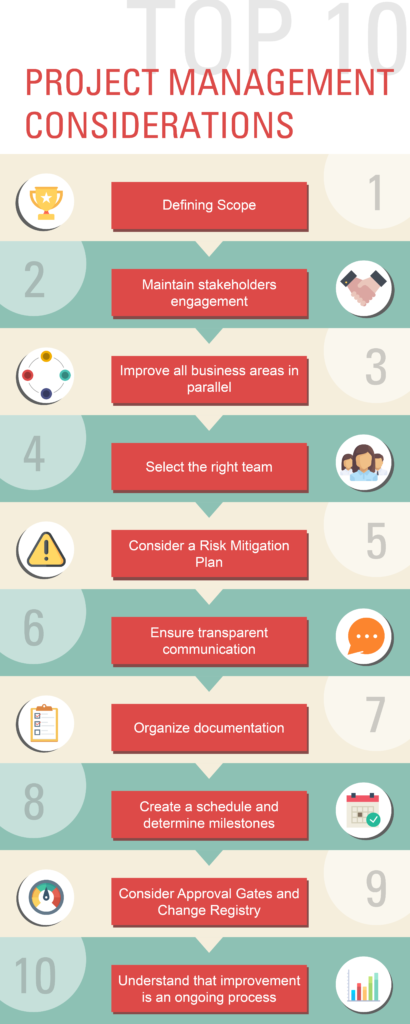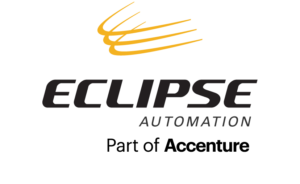 Competitive demands are constantly rising in the automation industry. In order to succeed in this environment, automated manufacturing suppliers must be efficient and adaptable to challenging situations by enabling a flexible work environment and following critical procedures.
Competitive demands are constantly rising in the automation industry. In order to succeed in this environment, automated manufacturing suppliers must be efficient and adaptable to challenging situations by enabling a flexible work environment and following critical procedures.
The success of automating manufacturing processes will be dependent upon the technology, culture, and processes of the automated manufacturing supplier. Here are ten project management strategies to ensure project success.
Defining Scope
Defining project scope is the first crucial step in ensuring project success. The project scope will outline project requirements and its desired outcomes.
Maintain stakeholders engagement
Active and continuous support from stakeholders will facilitate the development of a successful project. Establishing a stakeholder communication plan will ensure stakeholders are kept up to date on the project. It is important to understand that their engagement will be affected by their busy day-to-day schedules. Therefore, keeping them informed of the crucial elements and current situation is critical.
Improve all business areas in parallel
Success relies on an integrated collaboration from all departments within an organization. For instance, new developments and designs for equipment in mechanical engineering may require the machine shop and toolmakers to learn new techniques, purchase advanced equipment and gain new knowledge. A project manager understands that the right combination of expertise and talent could determine the delivering of a successful project.
Select the right team
Each task during a project is executed by specific team members according to their capabilities. It is important for the project manager to be able to balance the task durations in order to align with the availability of team resources. Often, it is important to align the tasks that are being developed, so their completion can be passed along to another team within a timeframe that best balances the organization as a whole.
Consider a Risk Mitigation Plan
A Risk Mitigation plan is a useful tool for the project manager to coordinate potential issues within the project and consider rapid solution procedures. This allows the organization to respond better and faster to conflicts.
Ensure transparent communication
Communication is essential, especially during the early stages of a project in order to keep clients up-to-date and increase productivity. Early team meetings to discuss loading, skill sets, upcoming scheduling or resource conflicts are critical for planning around such events. Therefore, clear and constant communication is important to keep the team aligned with the project’s current state and what is expected in the next phase.
Organize documentation
Unexpected scenarios and overruns can be identified easier by documenting every phase involved in the project. It is important to support the project with documented meeting minutes and critical events including who was involved. Often the customer will rely on the project manager’s meeting minutes to clarify issues or concerns later in a project. Organized documentation supports all parties in clear expectations and understanding of the project goals.
Create a schedule and determine milestones
Understanding the critical path of the project schedule is required to ensure a successful project. Long lead-time purchased items, delivery dates for customer supplied equipment and processes that have long fixed durations, typically affect the critical path. Initial schedule and milestone development may have several revisions. Long duration tasks such as mechanical design, may have to be broken down into smaller tasks which will allow the project to be broken into sections. Design reviews and subsequent drawing development will support project releases to happen much earlier and in more manageable sizes.
Consider Approval Stage Gates and Change Registry
It is crucial to monitor all aspects of a project. The inclusion of Approval Stage Gates and Change Registry will assist in ensuring a successful project. A Change Registry will track any changes to the original project scope and Approval Stage Gates will ensure approval of any project revisions. Weekly metrics review, customer status updates, team meetings and customer visits allow for communication of project status and change order approval. This facilitates visibility of project status and which areas are on or behind schedule. As the project progresses, it is important to monitor any deviations and make the appropriate corrections.
Understand that improvement is an ongoing process
As the industry is constantly evolving, an organization has to improve its processes and technology in order to adapt to shifting demands and constant changes. It is crucial that the project manager has the ability to understand such changes and be able to respond quickly.
Eclipse Automation’s project management service provides clients with a combination of industry knowledge and structured processes to deliver the best in production value. Our highly skilled staff begins job planning at the quoting stage, offering a single point client contact and extensive project monitoring throughout the production.
